Sierra
Nature Notes Archive: Page 2 |
|
Persistence
of pikas in two low-elevation national monuments in the western
United States |
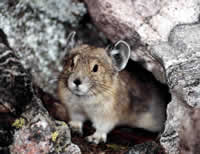 |
Mountain
Lion and Human Interactions in Yosemite National Park A dramatic rise in puma sightings and apparent changes in puma behavior raise concerns about increased risks to visitor safety in Yosemite National Park. How much time are pumas spending in developed areas and what are they doing while they are there? Update (11/03): Park biologists had to euthanize two Mountain lions in Yosemite Valley because of possible danger to visitors. The lions were hunting raccoons — attracted by food left by campers — in heavily used areas. Full Story. |
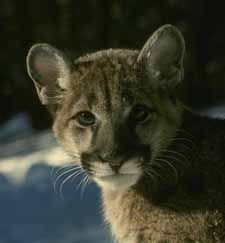 |
Family
Nature Explorations — A Resource Kit Children have a natural curiosity, which constantly leads them into discoveries. Parents, grandparents, and other adults who explore nature with kids can support youthful inquiry by being equipped with some handy resources. |
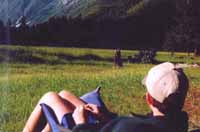 |
The
Naming of Beetle Rock at Giant Forest, Sequoia National Park:
How the Rock got a Name, The World Discovered an Insect, and
An Enthusiastic Amateur Entomologist Started a Career Meet, at long last, the Beetle of Beetle Rock: a naturalist launches a nationwide search for the elusive Trachykele opulenta Fall, 1906, that gave Sequoia Park's Beetle Rock its name. |
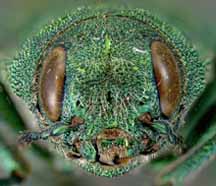 |
A
vegetation transect along the Sierran Pacific Crest Trail |
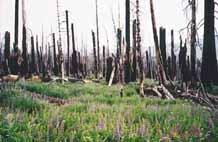 |
Yosemite
Falls—A New Perspective Upper Yosemite Fall now leaps from the hanging valley of Yosemite Creek. In the not-too-distant geologic past its water cascaded down through the prominent ravine immediately to the west (left). |
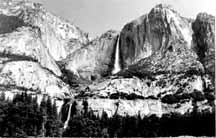 |
How
has climatic variation influenced treeline dynamics in the
past? For most of the past 3,500 years, Sierra treeline was higher than it is today. From treerings and remnant stands of ancient Foxtail pines, scientists are able to reconstruct the climatic conditions that cause treeline to fluctuate as well as how global warming might influence treeline in the future. |
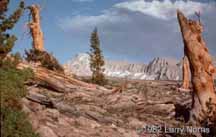 |
Do
trails fragment meadows more than we think? A bug's view. The authors investigate the effects of hiking trails on insects and other invertebrate populations in Sierran meadows. Become acquainted with this diverse — but almost unknown — community beneath the grasses. |
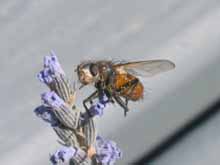 |
Good
News For Sierra Sheep
|
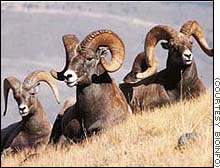 |
The
Great Droughts of Y1K Two severe decades-long droughts, ending about AD 1100 and AD 1350, caused major ecological changes in the west. We can still see evidence of that time in, for instance, the tips of trees showing in Yosemite's Tenaya Lake — their roots still attached under 70 feet of water. Can such droughts return? |
|
The
Soundprints Of Science The sounds of wilderness — or their lack —are a vital part of not only our experience as visitors but, as new evidence is showing, critical to the life cycles of animals. Elizabeth van Mantgem describes the recent work of Dr. Bernie Krause working to quantify the deterioration of the biophony, or natural orchestras, in our National Parks.
|
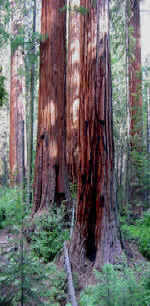 |
The
Sierra Wave One of the most dramatic examples of the "poetry of clouds" Sierra visitors are often lucky to see, are lenticular clouds forming over the Sierra Crest. Beth Pratt explains the science — and poetry — of their formation.
|
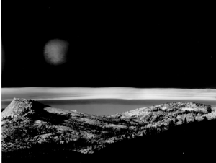 |
FOLLOWING
THE FROGS For over a million years, generations of mountain yellow-legged frogs have sunned themselves on the shores of Sierran lakes. In the last 20 years, their population has been crashing. Biologists have now visited almost 8000 lakes, including all lakes of Yosemite and Sequoia-Kings Canyon National Parks, to establish a definitive survey of their numbers and range. |
 |
Fire
Regimes Fire is a vital part of the Sierra forest ecosystem. Tree-ring analyses allows scientists to date the frequency and intensity of natural fires to better understand the role between climate cycles and fire frequency.
|
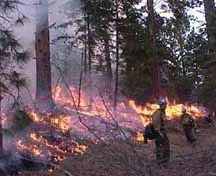 |
Sierran
Treeline Dynamics in a Changing Climate Hikers on the John Muir Trail might wonder at the expanses of wind blasted snags far above the present living forest. When did those trees live? How did they die? What does global warming mean for Sierran forests?
|
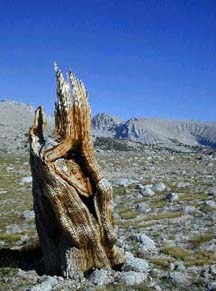 |
| Sierra
Nevada Bighorn Sheep: a Brief History by John Wehausen, PhD President, Sierra Nevada Bighorn Sheep Foundation “Were granite to come to life, it would undoubtedly look like a bighorn sheep, so perfectly do they blend into that habitat” writes Dr. Wehausen of the endangered Sierra bighorn sheep. Numbering no more than 100 individuals only a few years ago, the scattered and isolated bands may be inching back from extinction. Update 1/23/03: See Current Events. |
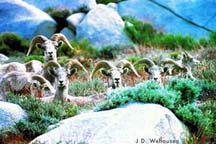 |
Giardia
Lamblia and
Giardiasis Is Giardia
lamblia really the scourge of hikers in the Sierra backcountry?
Test question: statistically, which would help more in prevention
of giardiasis, a water filter or soap?
|
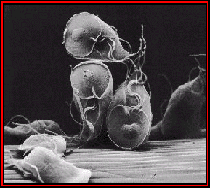 |
Search
for Rare Furbearers Leads CSERC Staff into Remote Corners of
the Forest |
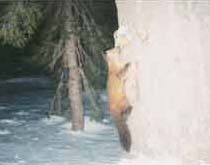 |
Monitoring
snow from the beach in San Diego: Frostbitten fingers may be a thing of the past for snow researchers: technology now makes it possible to monitor the Sierra snowpack from sunny San Diego—or anywhere else you can plug in a computer. Still, there is some shovel work on the road to this brave new world...
|
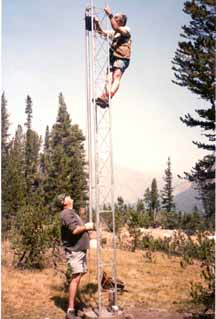 |
Tapping
the Sierra Nevada Reservoir Do you know where your drinking water comes from? Follow the long journey of snow melting at 12,000 feet on the Sierra crest to your kitchen faucet. A huge, complex and expensive maze of dams and aqueducts work in the background so water is there for you at a twist of the handle. What are the costs to California's riparian habitat as a result? |
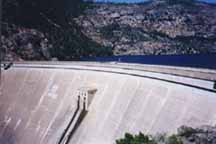 |
Looking
for the Past in the Higher
Elevations of Kings Canyon National Park For thousands of years, Native Americans lived and traded in the harsh environment along the crest of the Sierra Nevada. Two archeologists describe their recent finds in Kings Canyon's alpine zone. |
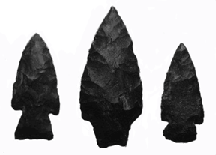 |
A
Summer Spent Saving Frogs: Based
on recent research in the Sierra, restoring the habitat of the
endangered mountain yellow-legged frog has become critical to their
survival. Biologist Ryan Peek describes his summer spent fishin'. |
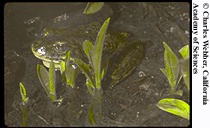 |
Estimated
Ages of Some Large Giant Sequoias:
|
|
Understanding
Smog in the Sierra We think of our National Parks as the last islands of clean air and healthy ecosystems. Think again. The good news, though, is that the situation is reversible.
|
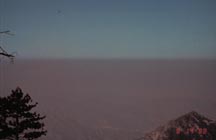 |
Searching
for Slender Salamanders: Always the sign of a good job: getting paid to be a kid. Come with John as he searches for the elusive and cuddly Batrachoseps.
|
|
| Mapping
Sequoia & Kings Canyon's Vegetation: From Muhlenbergia filiformis to Sequoiadendron giganteum By Laura Pilewski Vegetation-mapping crew field botanist, Sequoia National Park Follow a small band of botanists as they roam alpine peaks mapping and inventorying the flowers and plants of Sequoia and Kings Canyon National Parks. |
|
The
Mountain Yellow-Legged Frog: |
 |
Vernal
Pools - Ephemeral Oasis of the Foothills |
|
A
White Spring in the Mountains You may be mountain biking on dusty trails already or checking out conditions for wind surfing, but the mountains are still locked in snow. A former winter backcountry ranger in Yosemite listens to spring's arrival at 10,000 feet.
|
|
Grazing
and Yosemite's Meadows:
|
 |
Our Founder Questions? Go to About Our New Site |
Masthead
Photo from: |